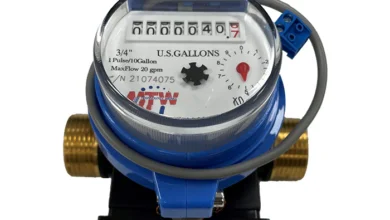The Role of Competency Demonstration Reports in Skilled Migration

In today’s globalized world, skilled migration has become a vital avenue for professionals seeking better career opportunities abroad. For engineers and other technical professionals looking to migrate to countries like Australia, New Zealand, and Canada, the Competency Demonstration Report (CDR) plays a critical role in the immigration process. This article explores how CDRs fit into the skilled migration framework, their significance, and what applicants need to know to successfully navigate this essential component.
Understanding Competency Demonstration Reports (CDRs)
A Competency Demonstration Report is a structured document that showcases an individual’s skills, knowledge, and experience in relation to a specific professional field. For engineering professionals seeking migration, a CDR is typically required to demonstrate that their qualifications and experience align with the standards set by the relevant assessment authority—in Australia, this is usually Engineers Australia.
The CDR is more than just a resume or a collection of certificates; it is a comprehensive narrative that articulates how an applicant meets the required competencies outlined by the assessment authority. This includes detailing work experience, professional achievements, and relevant projects that illustrate the applicant’s skills and problem-solving abilities.
The Immigration Process and CDRs
When applying for skilled migration, candidates must undergo a skills assessment to verify that their qualifications meet the standards of the host country. In Australia, this process is essential for obtaining a skilled migration visa. Here’s how CDRs fit into this framework:
1. Skills Assessment Requirement
Before applying for a visa, applicants must submit their CDR to the relevant authority for skills assessment. Engineers Australia evaluates the CDR to ensure that the candidate’s skills and experience align with the Australian engineering standards. This assessment is crucial, as it determines whether the applicant is eligible for skilled migration.
2. Demonstrating Competencies
The CDR must clearly demonstrate the applicant’s competencies in areas such as engineering knowledge, problem-solving, teamwork, and leadership. Each section of the report is crafted to align with specific competency elements outlined by Engineers Australia. This alignment is essential; if the report fails to adequately address these competencies, the application may be rejected.
3. Supporting Documentation
In addition to the CDR, applicants must provide supporting documents such as academic transcripts, employment references, and professional certifications. These documents validate the information presented in the CDR and provide a comprehensive picture of the applicant’s qualifications.
4. The Importance of Clarity and Precision
Given that the CDR is a critical component of the skills assessment, clarity and precision in writing are paramount. Assessors typically review numerous reports, so a well-organized and clearly articulated CDR increases the chances of a favorable assessment. Candidates should focus on presenting their experiences in a structured format, using specific examples to illustrate their competencies.
Challenges Faced by Applicants
While the CDR report is a powerful tool for skilled migration, many applicants face challenges in preparing an effective report. Common difficulties include:
- Understanding Competency Standards: Many candidates may not fully grasp the specific competencies required, leading to misalignment between their experiences and what the assessors are looking for.
- Articulating Experiences: Translating work experiences into the structured format of a CDR can be daunting, particularly for those unfamiliar with the Australian context or industry standards.
- Cultural Differences: Applicants from diverse cultural backgrounds may struggle with the nuances of professional communication expected in their CDR, which can impact the overall effectiveness of their report.
Strategies for Crafting an Effective CDR
To maximize the chances of a successful skills assessment, applicants must pay careful attention to how they construct their CDR. Here are some effective strategies to consider:
1. Understand the Competency Standards Thoroughly
Before beginning your CDR, familiarize yourself with the specific competency standards required by Engineers Australia or the relevant assessment authority. Review the guidelines provided on their official website and ensure you understand what each competency entails. This will help you tailor your experiences to meet these standards effectively.
2. Follow the Required Structure
A typical CDR consists of several key components: a personal introduction, a summary of professional development, and three Career Episodes that detail specific projects or experiences. Following the prescribed format is crucial, as it not only helps the assessors find the information they need quickly but also demonstrates your ability to follow instructions—an important competency in any professional setting.
3. Use Specific Examples in Career Episodes
Your Career Episodes should focus on specific projects or tasks where you demonstrated your engineering competencies. For each episode, describe:
- The Context: What was the project about? What were the objectives?
- Your Role: Clearly outline your responsibilities and contributions.
- The Results: Highlight the outcomes of your work, using quantifiable metrics where possible. Did you complete the project ahead of schedule? Did your contributions result in cost savings or efficiency improvements?
This level of detail not only provides evidence of your skills but also allows the assessors to visualize your contributions in real-world scenarios.
4. Engage in Professional Development
Including any relevant courses, workshops, or certifications in your CDR can bolster your application. This demonstrates a commitment to continuous learning and professional growth—qualities highly regarded in any field. Make sure to highlight how these experiences have enriched your expertise.
5. Seek Feedback and Professional Help
Don’t hesitate to seek feedback from peers or mentors who have successfully gone through the CDR process. Their insights can help you identify areas for improvement. Additionally, consider consulting with professionals or agencies specializing in CDR preparation if you feel uncertain about crafting your report. Their expertise can guide you in presenting your skills effectively.
Common Pitfalls to Avoid
While preparing a CDR, many applicants make certain mistakes that can hinder their chances of success. Here are some common pitfalls to watch out for:
- Vagueness: Avoid generalizations. Be specific about your contributions and the skills you demonstrated. Ambiguity can lead assessors to question your qualifications.
- Overlooking the Target Audience: Remember that the assessors may not be familiar with your specific work context or terminology. Aim for clarity and simplicity in your language, avoiding jargon unless it’s widely understood in the engineering field.
- Neglecting Proofreading: Spelling and grammatical errors can detract from the professionalism of your CDR. Always proofread your report multiple times and consider having someone else review it as well.
Success Stories: The Impact of CDRs on Migration
Numerous professionals have successfully navigated the skilled migration process through well-prepared CDRs. For instance, Raj, a mechanical engineer from India, was able to highlight his project management skills and innovative contributions through a structured CDR. This not only earned him a positive skills assessment but also led to a lucrative job offer in Australia.
Similarly, Emily, a software engineer, utilized her CDR as a networking tool while preparing her application. By engaging with industry professionals and seeking feedback on her CDR, she made connections that ultimately resulted in a job offer before she even formally applied for positions.
These success stories underline the importance of a well-crafted CDR in not only securing a positive skills assessment but also opening doors to career opportunities.
Conclusion
Competency Demonstration Reports play a crucial role in the skilled migration process for engineers and technical professionals. They serve as a comprehensive showcase of an applicant’s skills, experiences, and professional development. By understanding the requirements, following a structured approach, and avoiding common pitfalls, candidates can craft compelling CDRs that enhance their chances of a successful migration journey.
As the demand for skilled professionals continues to grow globally, the importance of a well-prepared CDR cannot be overstated. It is not just a gateway to migration; it is an opportunity to present your professional identity and aspirations to potential employers in a new land. With the right approach, your CDR can be the key to unlocking a successful international career.





